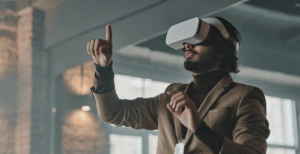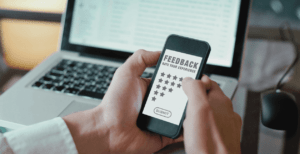In the fast-paced world of product design, user research stands as the compass that steers the ship of innovation. For product managers keen on steering their products towards success, understanding the methodologies and techniques that underpin robust user research is non-negotiable. User research is not a one-size-fits-all approach; rather, it’s a kaleidoscope of methods and practices that seek to unravel the enigma of user behavior and preferences. Here, we unpack 10 potent user research methodologies and techniques that are indispensable for creating user-centered designs.
1. Interviews: Conversations that Spark Ideation
The interview process is where user research transcends mere data collection to become a conversation that breathes life into the design process. Structured, unstructured, and semi-structured interviews provide invaluable insights, creating a nuanced understanding of user experiences and desires.
Impact on Product Design:
Deep insights that surveys can’t capture, the ability to probe, adaptability to different types of research goals.
2. Surveys and Questionnaires: Gathering User Feedback at Scale
Surveys and questionnaires are commonly used methods for gathering user feedback on a larger scale. They can be distributed online or in person, and allow researchers to gather opinions and preferences from a large number of users. Surveys often incorporate Likert scales or multiple-choice questions to quantitatively measure user satisfaction.
Benefits:
Efficient way to gather data from a large number of users, can be easily distributed and completed remotely, allows for quantitative analysis of user feedback.
Limitations:
Surveys may not capture the full range of user experiences, may have response bias or low response rates if not well-designed and incentivized.
3. Usability Testing: The Litmus Test for User Experience
Usability testing involves observing users as they interact with the hardware prototype to identify usability issues and opportunities for improvement. Researchers set specific tasks for users to complete while observing their actions, verbalizations, and facial expressions. Usability testing helps uncover design flaws, navigation issues, and user interface challenges that impact the overall user experience.
Importance:
Direct feedback on product functionality, early problem detection, real-world context insights.

4. Card Sorting: Organizing Information Intuitively
Card sorting is a method used to understand users’ mental models and preferences regarding information or features related to the hardware product. Researchers provide users with a set of cards representing different features or categories and ask them to organize them into meaningful groups. This method helps inform the organization and structure of the hardware product’s interface or features.
Significance:
Fine-tuning user navigation, creating a structure that aligns with user mental models.
5. A/B Testing: The Challenger of Assumptions
A/B testing involves comparing different versions or variations of the hardware product with users to determine which design or feature set performs better in terms of user satisfaction and engagement. Researchers randomly assign users to different groups exposed to different product variations and measure their responses. A/B testing provides empirical evidence to inform design decisions and optimizations.
Utilization:
Optimizing UI/UX elements, validating design changes, quantitatively testing hypotheses.
6. Diary Studies: Capturing User Experiences over Time
Diary studies involve having users keep a diary or journal of their experiences with existing products or prototypes over a period. Users record their interactions, thoughts, and challenges related to the hardware product, providing longitudinal insights into usage patterns and pain points. Diary studies offer rich qualitative data that capture the nuances of real-world user experiences.
Benefits:
Understanding long-term use patterns, identifying pain points and opportunities for improvement.

7. Prototyping: Conceptualizing User Experience
Prototype testing involves creating prototypes or mockups of the product and testing them with users to gather feedback on usability, ergonomics, and functionality. Researchers observe how users interact with the prototypes, noting areas of confusion, satisfaction, or frustration. Iterative testing allows for refinement of the hardware design based on user feedback.
Feedback Loop:
Iterative improvements based on user feedback, reducing redesign costs later in the development cycle, shared vision for the design team and stakeholders.
8. Contextual Inquiry: Understanding User Needs and Behaviors in Real-World Settings
Contextual inquiry involves observing users in their natural environments, such as homes or workplaces, to understand how they interact with the product. This method combines elements of ethnographic research and usability testing to gain a deep understanding of user needs and behaviors. Researchers conduct interviews and participant observation to uncover implicit user preferences and pain points.
Benefits:
Gaining empathy for users, revealing insights into real-world product use, uncovering potential design opportunities.
9. Eye Tracking: Understanding Visual Attention
Eye tracking is a powerful user research methodology that allows product designers to understand users’ visual attention and behavior when interacting with a product. Using specialized equipment, eye tracking captures data on where a person looks, how long they look at something, and in what sequence they view different elements on the screen. This information can provide valuable insights into how users interact with a product’s interface, what elements catch their attention, and which parts they may miss altogether. Eye tracking can be particularly useful in identifying design flaws and improving the user experience.
10. Personas: Putting a Face to Data
Personas are archetypal characters, each representing a segment of a target audience. They amalgamate the data collected from the various research methods into a relatable profile. Personas serve as the ‘avatar’ for the end user, allowing the design team to better empathize with and design for them.
Creation:
Extracting common traits from research, giving a human name and a story to the persona, aligning traits with user goals.

In weaving these methodologies into the fabric of product design, we can launch their products with the assurance that they resonate with users on a profound level. User research does not just inform the product roadmap; it is the compass that aligns the product with the cardinal points of user needs and, ultimately, the pathway to success.




